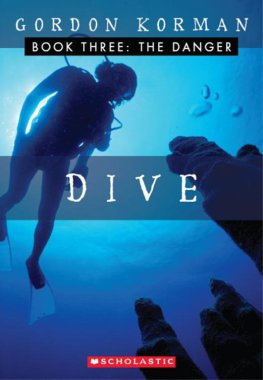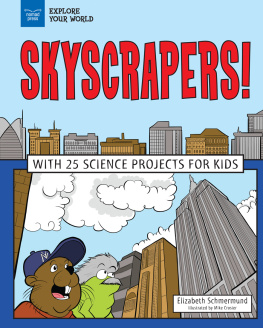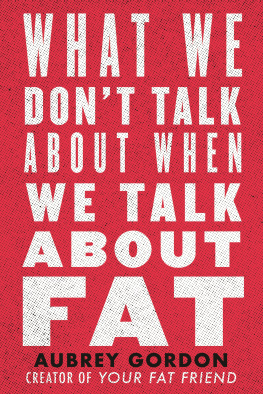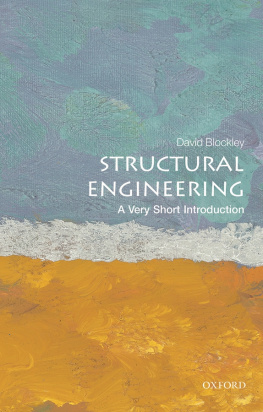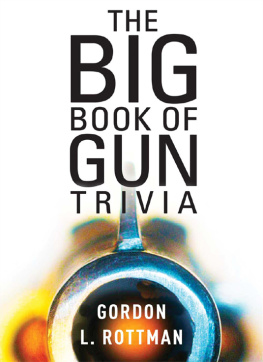Structures
____________________
or Why things dont fall down
Structures
____________________
or Why things dont fall down
J.E.Gordon
University of Reading
Reading, England
Copyright 1978 by J. E. Gordon
All rights reserved. No part of this publication may be reproduced, stored in a retrieval system, or transmitted, in any form or by any means, electronic, mechanical, photocopying, recording, or otherwise, without the prior written permission of the publisher. Printed in the United States of America.
Cataloging-in-Publication data for this book is available from the Library of Congress.
ISBN-10: 0-306-81283-5 ISBN-13: 978-0-306-81283-5
eBook ISBN: 9780786730353
Second Da Capo Press edition 2003
First Da Capo Press edition 1981
This Da Capo Press paperback edition of Structures: or Why Things Dont Fall Down is an unabridged republication of the first edition published in London in 1978. It is reprinted by arrangement with Penguin Books Ltd.
Published by Da Capo Press
A Member of the Perseus Books Group
http://www.dacapopress.com
Da Capo Press books are available at special discounts for bulk purchases in the U.S. by corporations, institutions, and other organizations. For more information, please contact the Special Markets Department at the Perseus Books Group, 11 Cambridge Center,
Cambridge, MA 02142, or call (800)255-1514 or (617)252-5298, or e-mail
.
To my grandchildren,
Timothy and Alexander
Among the innumerable mortifications which waylay human arrogance on every side may well be reckoned our ignorance of the most common objects and effects, a defect of which we become more sensible by every attempt to supply it. Vulgar and inactive minds confound familiarity with knowledge and conceive themselves informed of the whole nature of things when they are shown their form or told their use; but the speculatist, who is not content with superficial views, harasses himself with fruitless curiosity, and still, as he inquires more, perceives only that he knows less.
Samuel Johnson, The Idler (Saturday, 25 November 1758)
List of Plates
Bent masonry column in Salisbury Cathedral.
Stress concentration at crack tip (courtesy Dr Richard Chaplin).
Aneurism in cylindrical balloon.
Section of artery wall tissue (courtesy Dr Julian Vincent).
Corbelled vault at Tiryns.
Semi-corbelled postern gate at Tiryns.
Clare bridge, Cambridge (courtesy Professor. Adrian Horridge, F.R.S.).
Temple of the Olympian Zeus, Athens,
Skeletons of gibbon and gorilla.
Maidenhead railway bridge.
Menai suspension bridge (courtesy Institution of Civil Engineers).
Severn suspension bridge (courtesy British Steel Corporation).
Kings College Chapel, Cambridge.
H.M.S. Victory- (courtesy H.M.S. Victory Museum. Crown copyright).
American trestle bridge.
Britannia bridge (courtesy Institution of Civil Engineers).
Viomiet dresses (courtesy Mrs Nethercot and Vogue magazine).
Wagner tension field (courtesy The Fairey Company Ltd).
Tacoma Narrows bridge (courtesy Institution of Civil Engineers).
Portsmouth block-making machinery (Crown copyright. Science Museum, London).
Watson steam yacht (courtesy G. L. Watson & Co. Ltd).
The Parthenon.
The Lion Gate, Mycenae.
Foreword
I am very much aware that it is an act of extreme rashness to attempt to write an elementary book about structures. Indeed it is only when the subject is stripped of its mathematics that one begins to realize how difficult it is to pin down and describe those structural concepts which are often called elementary; by which I suppose we mean basic or fundamental. Some of the omissions and oversimplifications are intentional but no doubt some of them are due to my own brute ignorance and lack of understanding of the subject.
Although this volume is more or less a sequel to The New Science of Strong Materials it can be read as an entirely separate book in its own right. For this reason a certain amount of repetition has been unavoidable in the earlier chapters.
I have to thank a great many people for factual information, suggestions and for stimulating and sometimes heated discussions. Among the living, my colleagues at Reading University have been generous with help, notably Professor W. D. Biggs (Professor of Building Technology), Dr Richard Chaplin, Dr Giorgio Jeronimidis, Dr Julian Vincent and Dr Henry Blyth; Professor Anthony Flew, Professor of Philosophy, made useful suggestions about the last chapter. I am also grateful to Mr John Bartlett, Consultant Neurosurgeon at the Brook Hospital. Professor T. P. Hughes of the University of the West Indies has been helpful about rockets and many other things besides. My secretary, Mrs Jean Collins, was a great help in times of trouble. Mrs Nethercot of Vogue was kind to me about dressmaking. Mr Gerald Leach and also many of the editorial staff of Penguins have exercised their accustomed patience and helpfulness.
Among the dead, I owe a great deal to Dr Mark Pryor lately of Trinity College, Cambridge especially for discussions about biomechanics which extended over a period of nearly thirty years. Lastly, for reasons which must surely be obvious, I owe a humble oblation to Herodotus, once a citizen of Halicarnassus.
Acknowledgements
We acknowledge with gratitude permission to quote from various authors. For Douglas Englishs poem, Punch Publications Ltd; for quotations from Weston Martyrs The Southseaman, Messrs. William Blackwood Ltd; for the quotation from Rudyard Kiplings The Ship that Found Herself, Messrs. A. P. Watt & Son and the executors of the late Mrs Bambridge and the Macmillan Co. of London and Basingstoke. Also to Mr H. L. Cox for the quotation from his book The Design of Structures of Least Weight. The quotations from the New English Bible (Second Edition 1970) are by kind permission of the Oxford and Cambridge University Presses.
We are also most grateful to all those named in the List of Plates who have so kindly provided illustrations and given permission to reproduce them.
We have received a great deal of help from many people and organizations with regard to both quotations and illustrations. If we have, in any instance, failed to make proper acknowledgement, we offer our apologies.
Chapter 1 The structures In our lives
-or how to communicate with engineers
As men journeyed in the east, they came upon a plain in the land of Shinar and settled there. They said to one another, Come, let us make bricks and bake them hard; they used bricks for stones and bitumen for mortar. Come, they said, let us build ourselves a city and a tower with its top in the heavens, and make a name for ourselves; or we shall be dispersed all over the earth. Then the Lord came down to see the city and tower which mortal men had built, and he said, Here they are, one people with a single language, and now they have started to do this; henceforward nothing they have a mind to do will be beyond their reach. Come, let us go down there and confuse their speech, so that they will not understand what they say to one another. So the Lord dispersed them from there all over the earth, and they left off building the city. That is why it is called Babel (that is, Babylon), because the Lord there made a babble of the language of all the world


